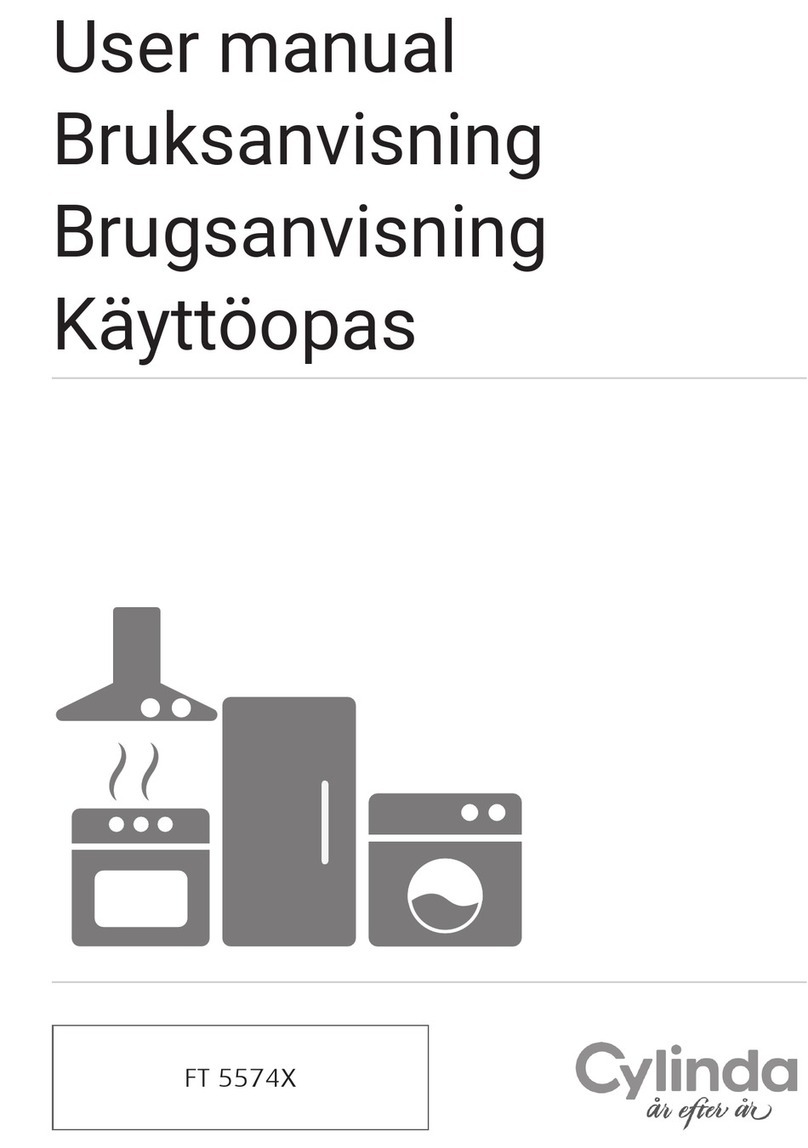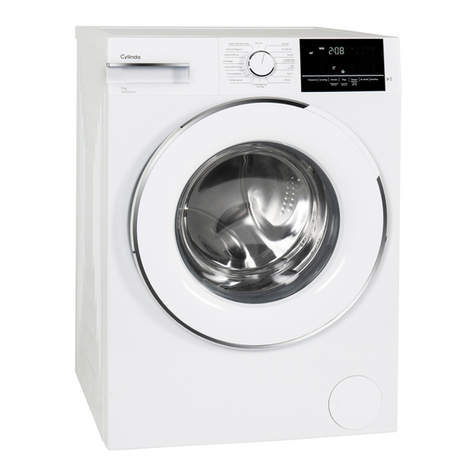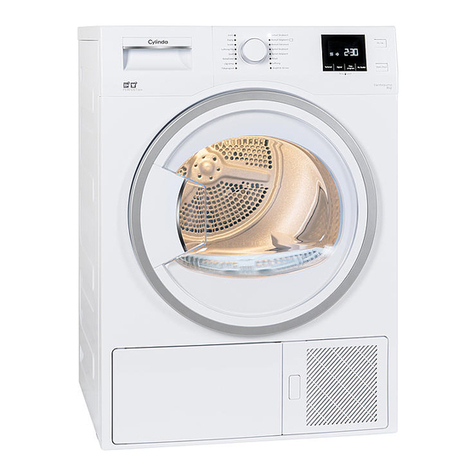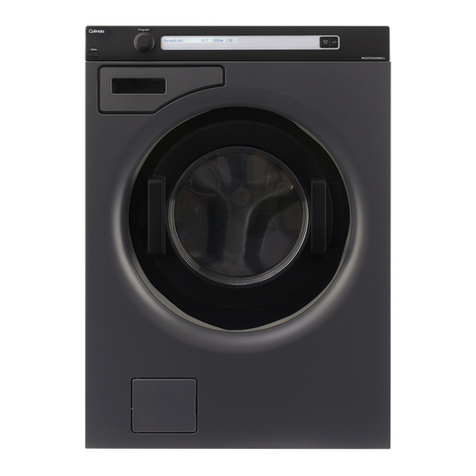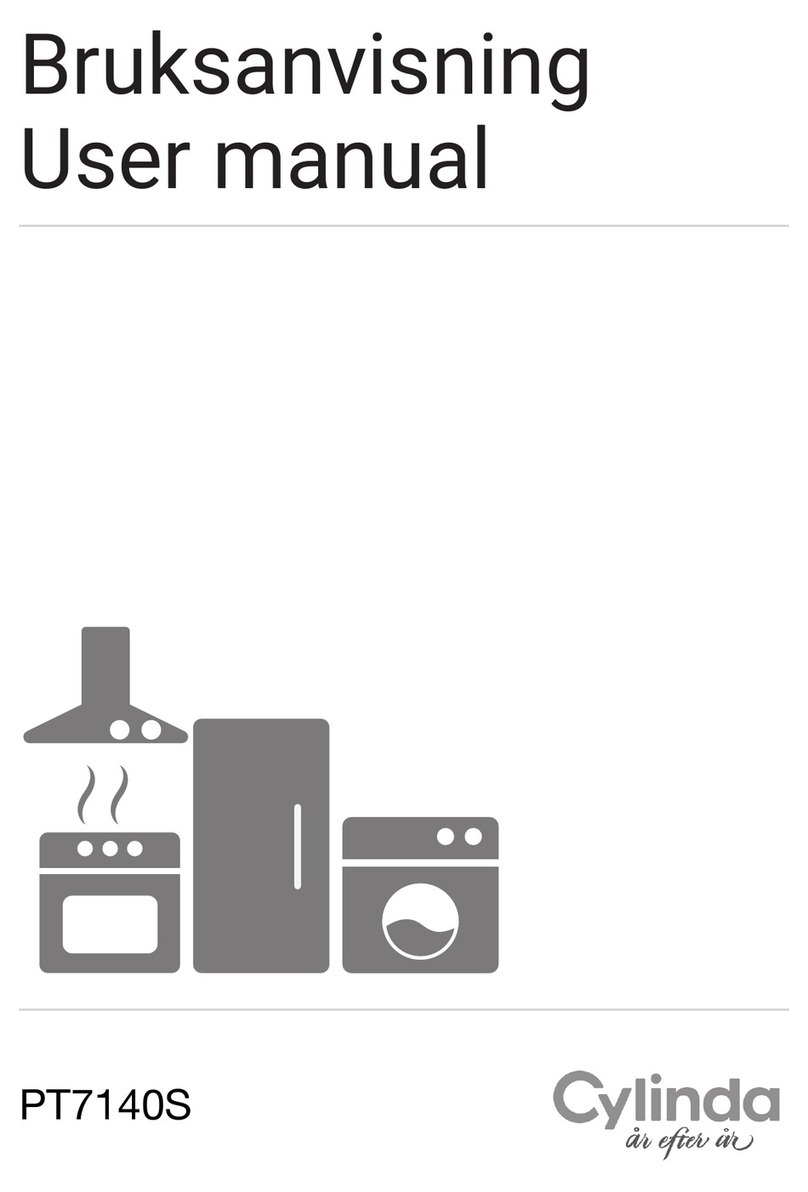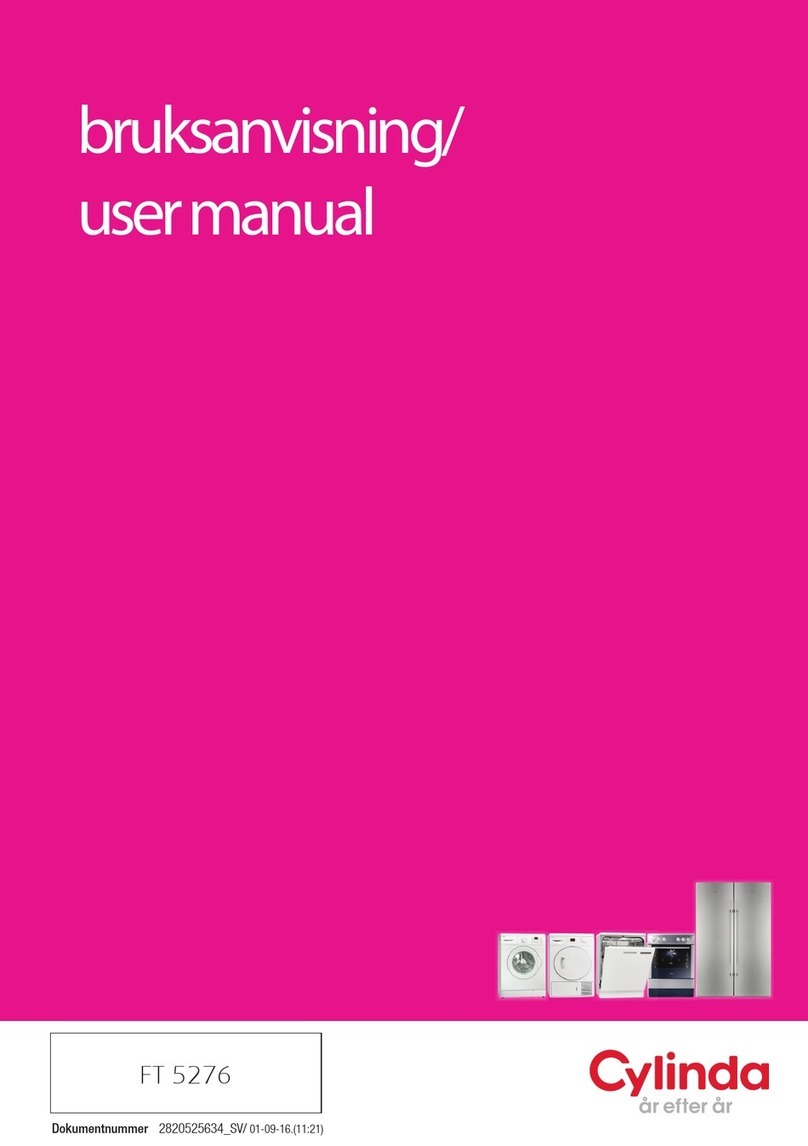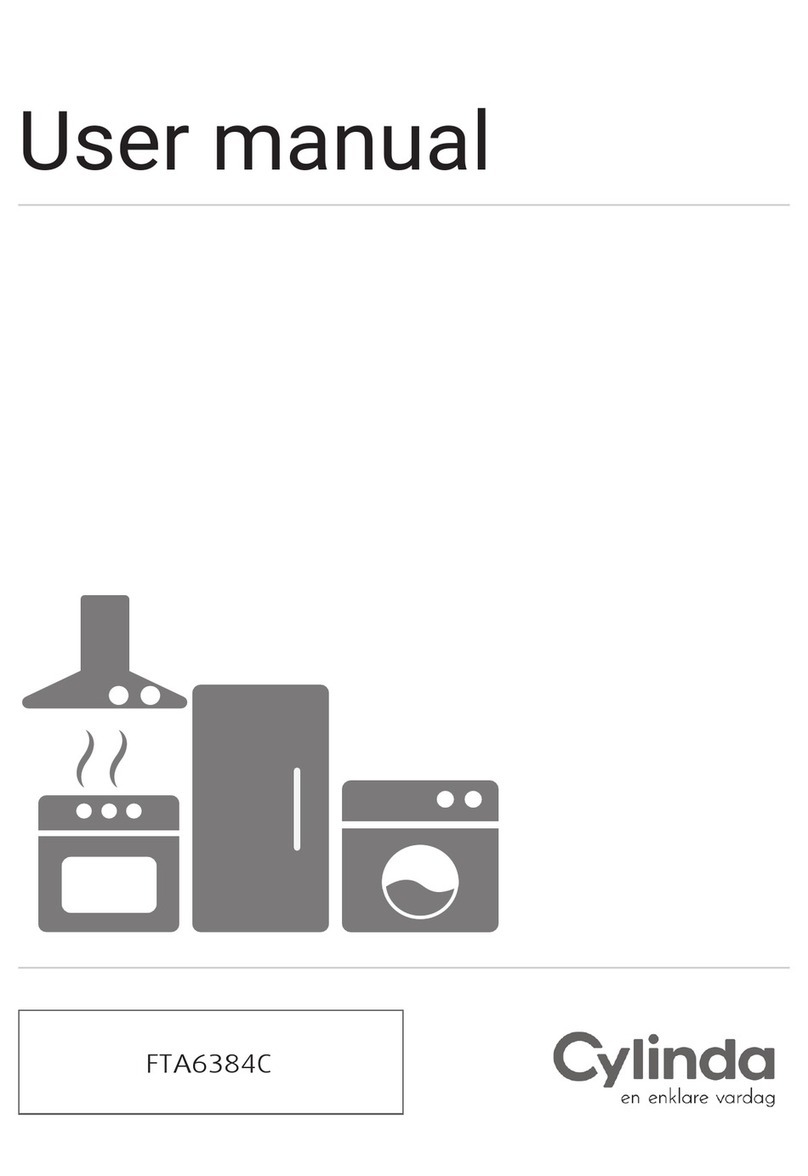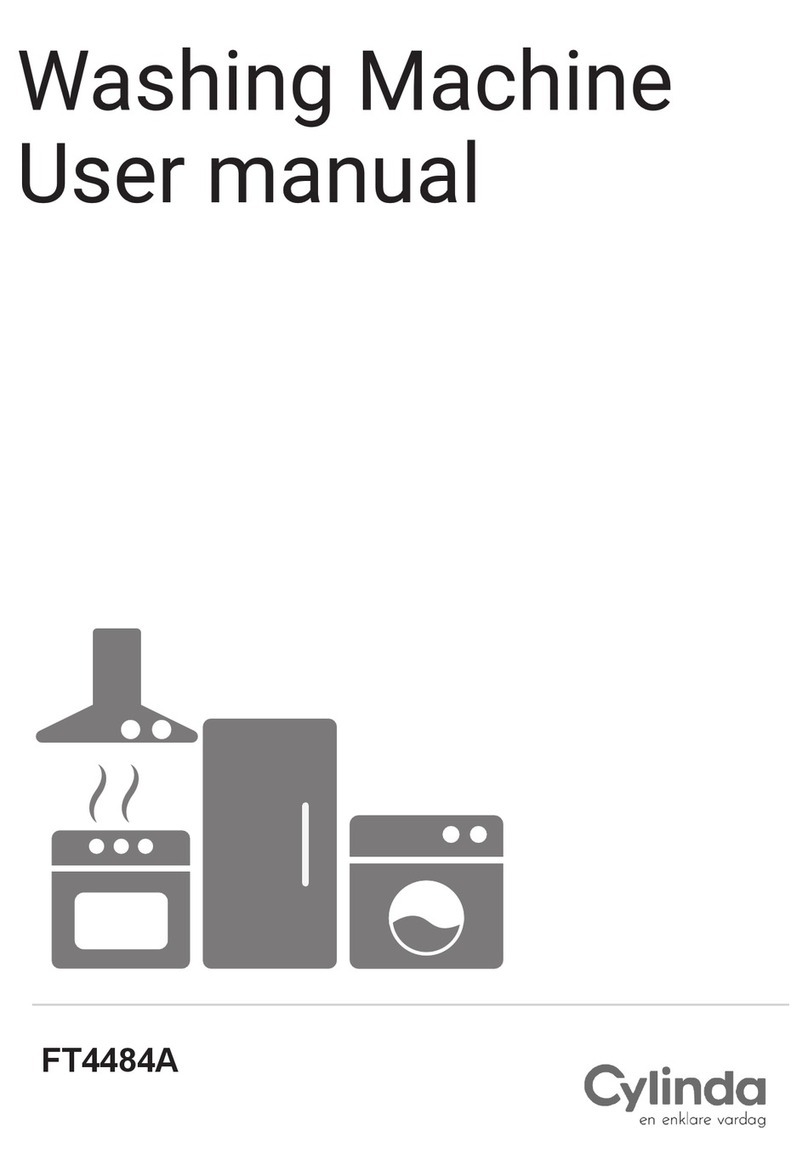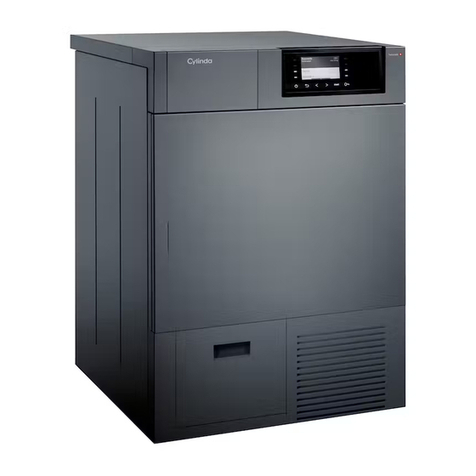34
General
• Read the operating instructions and keep
them in a safe place.
• Installation of water and electricity, if
required, should be carried out by a qualied
professional.
• The machine should only be used for
washing items as described in these
instructions. It is not intended for dry
cleaning.
• Use only detergent intended for machine
washing!
• Use only detergents and softeners for
machine wash. Manufacturer may not
assume responsibility for any damage and
eventual discolouring of gaskets and plastic
components as a consequence of incorrect
use of bleach and/or colouring agents.
• Never use detergents containing solvents,
since there is a danger of creating toxic
gasses which may damage the machine and
result in ignition or explosion.
• Do not use detergents that contain solvents
as this could lead to release of poisonous
gases, damage to the machine, and risk of
re and explosion.
• Do not use colourants (dyes) or bleaching
substances (substances for discolouration
or removal of colourants) as they contain
sulphuric compounds that could cause
corrosion.
• Excessive use of products containing
chlorine compounds increases the risk or
premature failure of appliance components.
This depends on the concentration of
chlorine, exposure time, and temperature.
• Bleaches that contain chlorine can be
replaced with oxygen-based bleaches.
Otherwise, a neutralization cycle should be
performed by running the Cotton program
at the highest temperature. For best results,
use hydrogen peroxide or oxygen-based
detergents.
• Remove any transport protection devices
before using the machine. See the "Transport
protection" chapter.
• Repairs and maintenance relating to safety
or performance must be carried out by a
qualied professional.
• Damaged mains cables must only be
replaced by a qualied electrician.
• The machine is not designed to be used by
persons (even children) that are physically
or mentally handicapped or lack experience
and knowledge. Such persons must receive
instruction in how to use the machine from
the person responsible for their safety.
• Children must be watched to ensure they do
not play with the machine.
• The emergency door opening tool is
attached to the rear of the detergent
compartment. Remove the detergent
compartment from the machine and remove
the emergency door opening tool.
Installation
See the "Installation" chapter.
Overow guard function
If the machine’s water level rises above the
normal level, the overow guard function begins
to pump water out and shuts o the water
intake. If the water level has not dropped within
60 seconds, the program is terminated.
Transport/Winter storage
If the machine is to be transported or stored in
unheated premises where the temperature can
fall below freezing, do as follows:
• Shut o the water to the washing machine,
loosen the supply hose to the intake valve
and let the water run out from the valve and
hose.
Recycling
This machine is manufactured and labelled
for recycling. In order to prevent injuries, the
machine must be made unusable once the
decision has been taken to dispose of it.
Contact your local authority for information
about where and how your machine can be
recycled correctly.
Safety instructions
